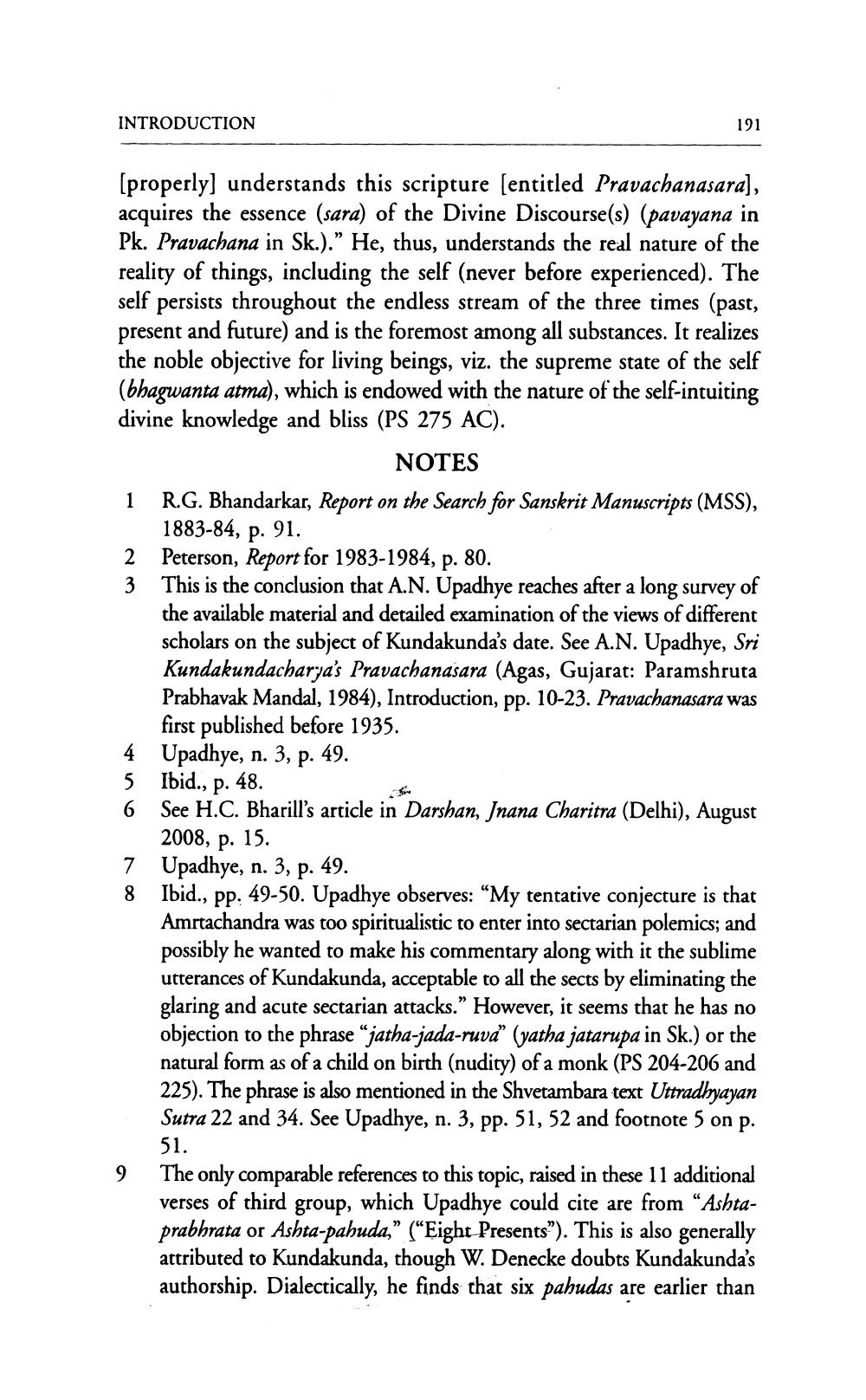________________
INTRODUCTION
[properly] understands this scripture [entitled Pravachanasara], acquires the essence (sara) of the Divine Discourse(s) (pavayana in Pk. Pravachana in Sk.)." He, thus, understands the real nature of the reality of things, including the self (never before experienced). The self persists throughout the endless stream of the three times (past, present t and future) and is the foremost among all substances. It realizes the noble objective for living beings, viz. the supreme state of the self (bhagwanta atma), which is endowed with the nature of the self-intuiting divine knowledge and bliss (PS 275 AC).
NOTES
191
1 R.G. Bhandarkar, Report on the Search for Sanskrit Manuscripts (MSS), 1883-84, P. 91.
Peterson, Report for 1983-1984, P. 80.
This is the conclusion that A.N. Upadhye reaches after a long survey of the available material and detailed examination of the views of different scholars on the subject of Kundakunda's date. See A.N. Upadhye, Sri Kundakundacharya's Pravachanasara (Agas, Gujarat: Paramshruta Prabhavak Mandal, 1984), Introduction, pp. 10-23. Pravachanasara was first published before 1935.
4 Upadhye, n. 3, P. 49.
5 Ibid., P. 48.
6
See H.C. Bharill's article in Darshan, Jnana Charitra (Delhi), August 2008, p. 15.
7 Upadhye, n. 3, p. 49.
8
2
3
9
Ibid., PP: 49-50. Upadhye observes: "My tentative conjecture is that Amrtachandra was too spiritualistic to enter into sectarian polemics; and possibly he wanted to make his commentary along with it the sublime utterances of Kundakunda, acceptable to all the sects by eliminating the glaring and acute sectarian attacks." However, it seems that he has no objection to the phrase "jatha-jada-ruva" (yatha jatarupa in Sk.) or the natural form as of a child on birth (nudity) of a monk (PS 204-206 and 225). The phrase is also mentioned in the Shvetambara text Uttradhyayan Sutra 22 and 34. See Upadhye, n. 3, pp. 51, 52 and footnote 5 on p.
51.
The only comparable references to this topic, raised in these 11 additional verses of third group, which Upadhye could cite are from "Ashtaprabhrata or Ashta-pahuda," ("Eight Presents"). This is also generally attributed to Kundakunda, though W. Denecke doubts Kundakunda's authorship. Dialectically, he finds that six pahudas are earlier than




